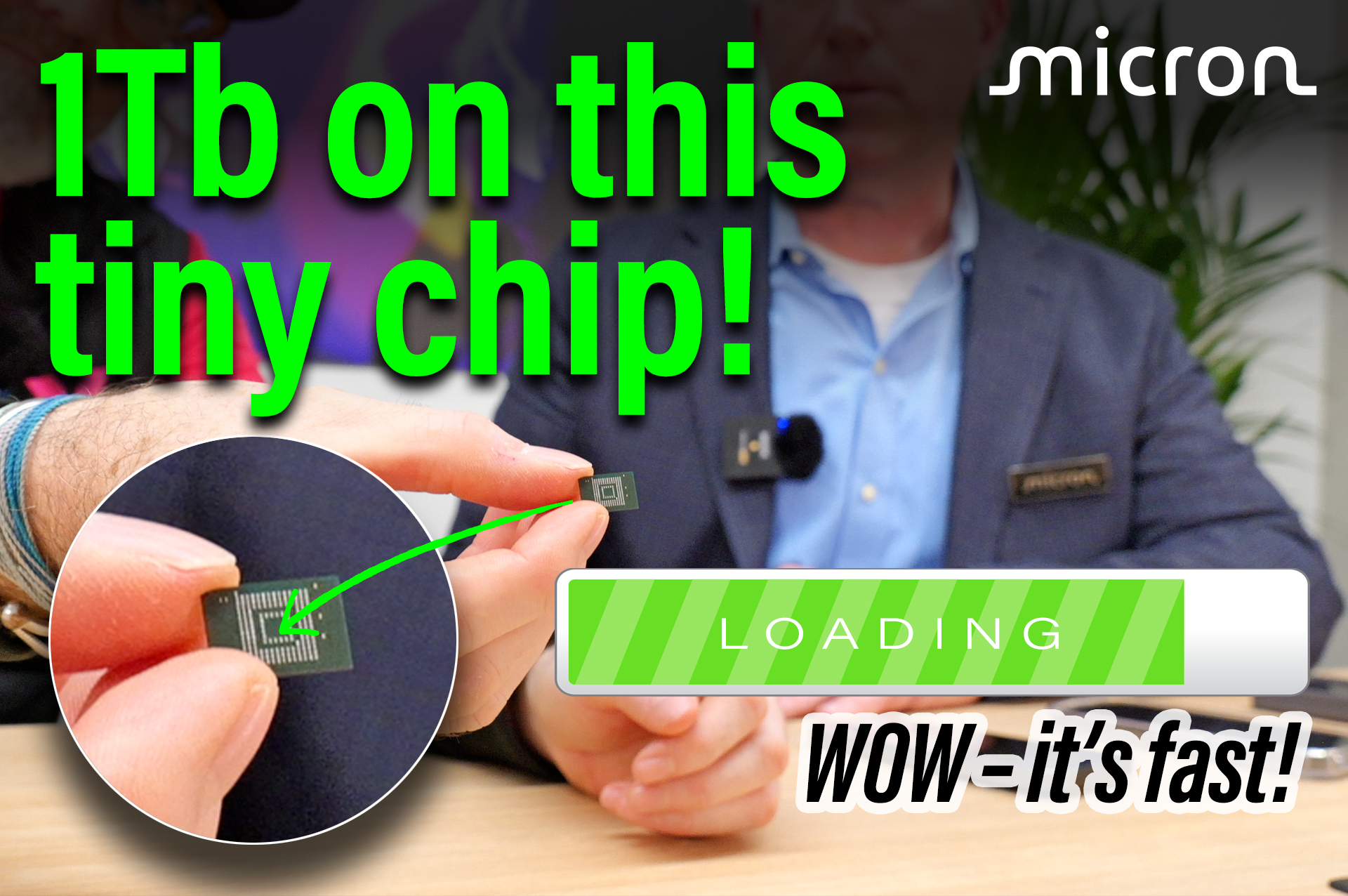Think memory’s just a background actor in your device’s drama? Think again. As AI shifts from server racks to your smartphone, low-power high-speed mobile memory is stepping into the spotlight—and Micron is centre stage, ready to steal the show.
At Mobile World Congress 2025, Micron unveiled storage the size of your pinky nail with a full terabyte of capacity. Let that sink in. This isn’t a sci-fi prop—it’s real, shipping, and built to keep your edge AI apps running faster, longer, and smarter.
From Megabytes to Multimodal Intelligence
Back in the day, mobile memory was all about squeezing more bits into less space. Now? It’s about delivering context-aware, multimodal AI on the fly.
Micron’s latest LPDDR5X memory and UFS 4.1 storage are enabling generative AI to run directly on-device. We’re not talking about pipedreams either. Engineers at Micron ran the LLaMA language model natively on a phone—no cloud, no cheat codes. With faster memory (9.6Gbps vs 7.5Gbps), the model responded 10 seconds quicker to a prompt. In mobile UX terms, that’s forever.
Why Low-Power High-Speed Mobile Memory Matters
Latency is the enemy of user experience—whether you’re loading an app, querying an AI model, or just asking your phone where to find decent guacamole.
To deliver responsive, battery-friendly AI, memory has to be three things:
- High-capacity – to fit today’s massive models (8 billion+ parameters).
- Blazing fast – to get data to processors and back before you blink.
- Power efficient – so your phone doesn’t die halfway through lunch.
Micron’s memory does all three—and is optimised for embedded systems, wearables, and next-gen mobile SoCs where energy budgets are tight.
Orchestrators, Multimodal Models, and the AI-Companion Future
Micron’s Chris Moore laid out a vision where your phone evolves into a digital companion—proactively helping based on voice, location, sensor input, and more. To make that vision reality, future devices will run not one but two large AI models in parallel:
- A Multimodal Model (MML), integrating data from GPS, camera, voice, touchscreen, and wearables.
- An Orchestrator LLM, acting on that context in real time.
You can’t spin all those plates without memory that’s fast, capacious, and efficient. Micron is building the infrastructure to support this symphony of silicon—on your wrist, in your ear, and in your pocket.
Design Engineering Takeaway: Memory Isn’t Just Memory Anymore
If you’re building edge AI systems, start treating memory like a key architectural decision—not just a spec box to tick. According to Micron, here’s what to prioritise:
- Capacity: Enough DRAM to fit your model without offloading.
- Bandwidth: High data rates to cut inference time.
- Power: Efficiency that doesn’t sacrifice speed.
In a world where AI is the interface, low-power high-speed mobile memory is what makes it feel magical.
Comments are closed.

Comments
No comments yet